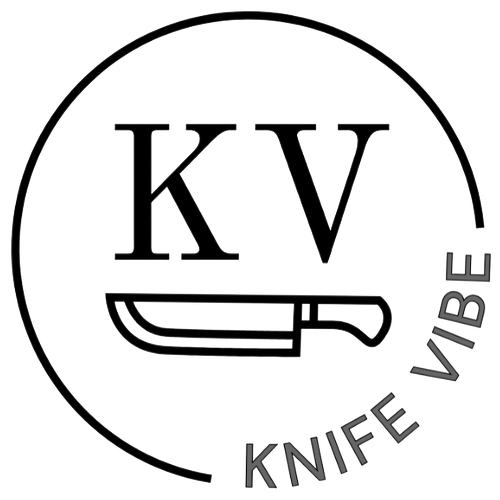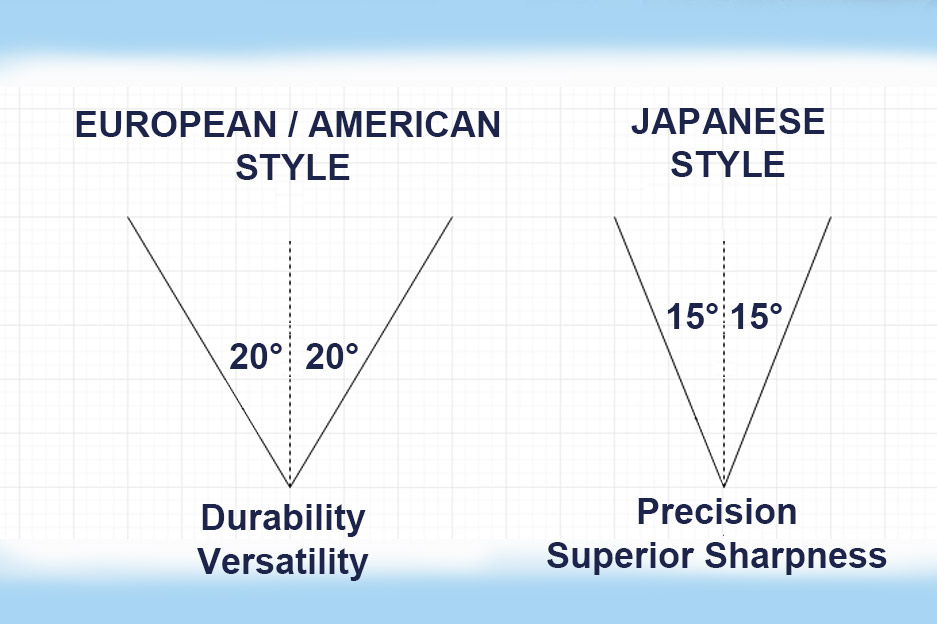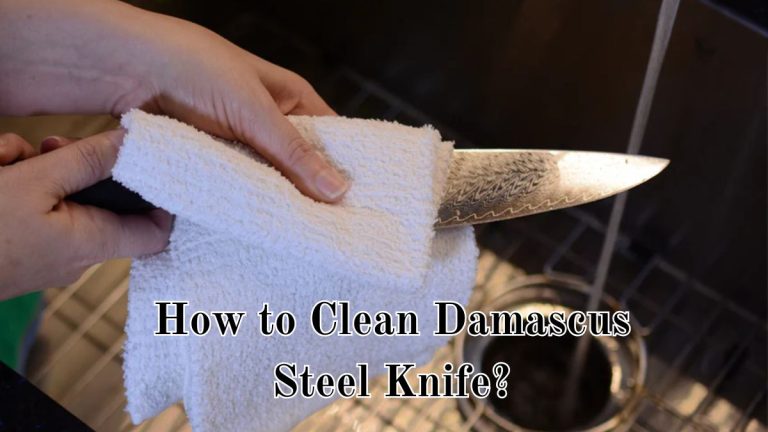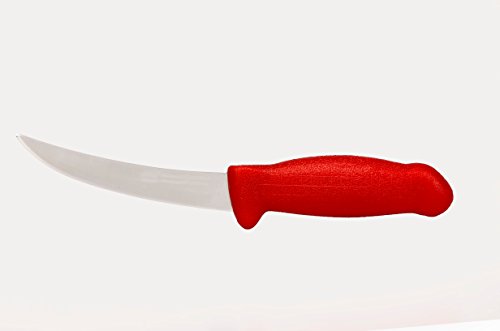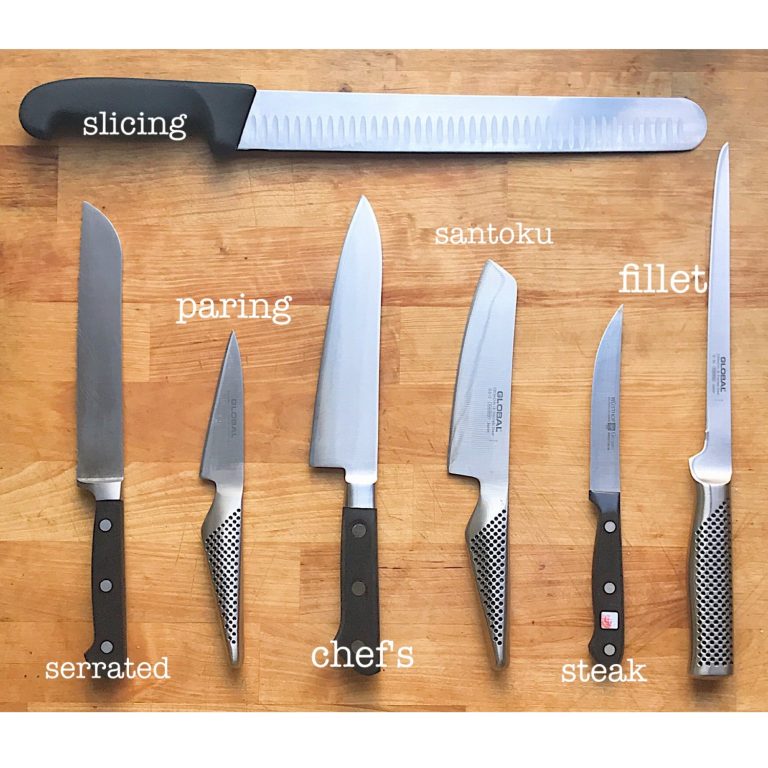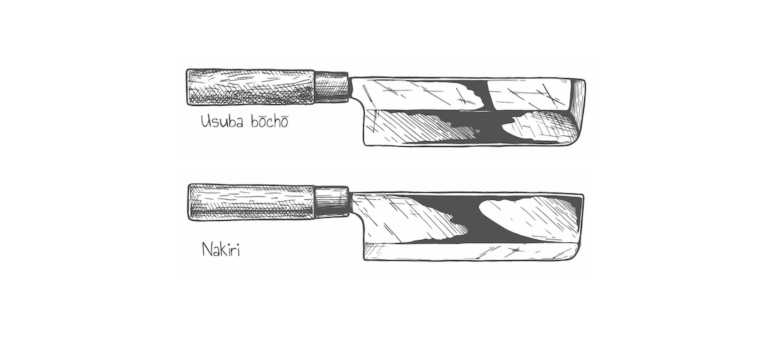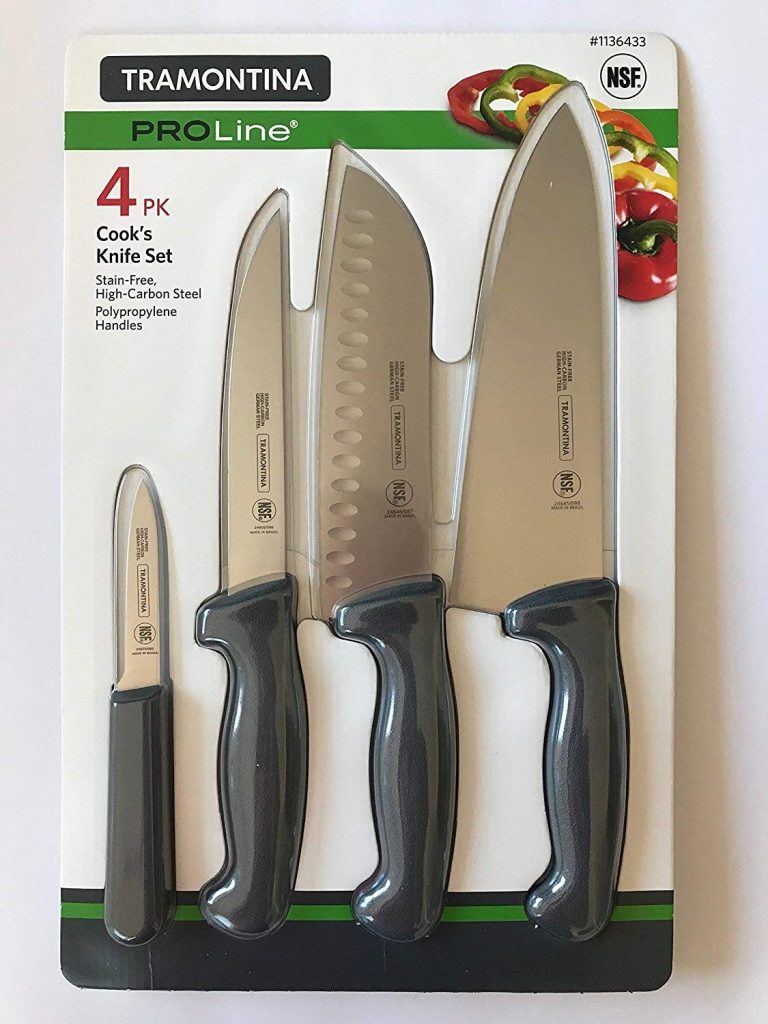15 Vs 20 Degree Knife: Which Angle is Best for Your Kitchen?
Choosing between a 15-degree and a 20-degree knife can be tricky. Both have their unique advantages.
Understanding the differences helps in selecting the right one for your needs. Knives are essential tools in every kitchen. The angle of the knife’s edge plays a crucial role in its performance. A 15-degree knife offers a sharper edge, ideal for precision tasks.
A 20-degree knife, on the other hand, is more durable and better for heavy-duty cutting. Whether you are a professional chef or a home cook, knowing these differences can enhance your cooking experience. In this post, we’ll compare these two knife angles. This will help you understand their benefits and decide which one suits your kitchen best.
Introduction To Knife Angles
Understanding knife angles is crucial for every kitchen enthusiast. The angle of your knife blade affects its sharpness and cutting performance. Choosing the right angle can make food preparation easier and more precise.
Importance Of Blade Angles
Blade angles determine the sharpness and durability of a knife. A sharper angle cuts more cleanly but may dull faster. A wider angle is more durable but may not slice as easily. The right balance depends on your cutting needs.
Common Kitchen Knife Angles
Kitchen knives commonly feature blade angles of 15 or 20 degrees. A 15-degree angle offers a sharper edge for precise cuts. Ideal for vegetables, fruits, and boneless meats. A 20-degree angle provides a more durable edge. Suitable for tougher tasks like cutting through bones or harder vegetables.
Credit: www.tiktok.com
15 Degree Knife Angle
The 15-degree knife angle is a popular choice for many chefs. It offers a precise and sharp edge. This angle is commonly used in Japanese knives. These knives are known for their precision and effectiveness in the kitchen.
Precision Cutting
A 15-degree knife angle ensures a razor-sharp edge. This sharpness makes it perfect for precision cutting. With this angle, you can make thin, clean cuts. This is ideal for tasks like slicing vegetables and filleting fish. The fine edge allows for effortless cutting with minimal force.
Best Uses In The Kitchen
The 15-degree knife angle is best used for delicate tasks. It excels in cutting soft ingredients. Here are some common uses:
- Sushi Preparation: Making thin slices of fish.
- Vegetable Slicing: Creating fine, even slices of vegetables.
- Fruit Cutting: Slicing fruits without crushing them.
This angle is not suitable for chopping hard foods. For instance, avoid using it on bones or frozen items. This will maintain the sharpness and longevity of the knife.
20 Degree Knife Angle
The 20-degree knife angle is a popular choice for kitchen knives. This angle offers a balance of sharpness and durability. It is ideal for both professional and home chefs. These knives perform well in various kitchen tasks. Let’s dive deeper into the benefits and applications of the 20-degree knife angle.
Durability And Strength
A 20-degree knife angle offers greater durability. The blade is thicker and less prone to chipping. This makes it suitable for tougher cutting tasks. It can handle bones, hard vegetables, and frozen foods. The blade remains sharp for longer periods. Less frequent sharpening is needed.
Strength is another key advantage. The 20-degree angle allows for a robust blade. It withstands more pressure during cutting. This makes it a reliable tool in busy kitchens. The knife maintains its edge even with heavy use.
Ideal Kitchen Applications
The 20-degree knife angle suits many kitchen tasks. It is perfect for chopping, slicing, and dicing. This angle works well with both soft and hard foods. It can cut through meat, poultry, and fish effortlessly. Vegetables and fruits are also easy to handle.
These knives are versatile. They fit well in both home and professional kitchens. Beginners find them easy to use. Experienced chefs appreciate their durability. The 20-degree angle knife is a valuable addition to any kitchen.
Comparing Sharpness
Choosing between a 15-degree and 20-degree knife can be challenging. Each angle has its own benefits and drawbacks. The key difference lies in their sharpness. Let’s explore how these angles compare.
Edge Retention
A 15-degree knife is sharper than a 20-degree knife. This is because the smaller angle creates a finer edge. A finer edge cuts through food more easily. But, the sharper edge of a 15-degree knife is more fragile.
Conversely, a 20-degree knife has a sturdier edge. This means it can retain its sharpness longer. It is less likely to chip or dull quickly. This makes it ideal for heavy-duty tasks.
| Angle | Sharpness | Edge Retention |
|---|---|---|
| 15 degrees | Sharper | Less durable |
| 20 degrees | Less sharp | More durable |
Sharpness Maintenance
Maintaining sharpness is crucial for any knife. A 15-degree knife needs more frequent sharpening. Its fine edge wears down faster. Sharpening a 15-degree knife requires precision. This can be time-consuming.
On the other hand, a 20-degree knife is easier to maintain. Its edge does not wear down as quickly. Sharpening a 20-degree knife is simpler. It requires less precision and effort.
- 15-degree knife: Needs frequent sharpening
- 20-degree knife: Requires less maintenance
Durability Factors
Choosing between a 15-degree and a 20-degree knife involves understanding their durability factors. Durability impacts how long your knife stays sharp and how resistant it is to damage. Let’s break down these factors under two main headings.
Resistance To Chipping
A key aspect of durability is how well the knife resists chipping. A 15-degree knife has a sharper edge, making it ideal for precise cutting tasks. Yet, this sharpness makes it more prone to chipping when used on hard materials. On the other hand, a 20-degree knife has a thicker edge, offering greater resistance to chipping. This makes it suitable for tougher cutting tasks.
Here’s a quick comparison:
| Angle | Sharpness | Chipping Resistance |
|---|---|---|
| 15-degree | Very Sharp | Lower |
| 20-degree | Sharp | Higher |
Longevity Of Blade
The longevity of a blade is crucial for those who use their knives frequently. A 15-degree knife maintains its sharpness for a shorter period because of its thin edge. Regular sharpening is necessary to keep it functional. Conversely, a 20-degree knife has a longer-lasting edge. Its thicker blade withstands more wear over time.
Consider these points:
- A 15-degree knife requires more frequent maintenance.
- A 20-degree knife remains sharp for longer periods.
In summary, choosing the right knife angle depends on your specific needs. A 15-degree knife offers precision but demands more care. A 20-degree knife provides durability and ease of maintenance. Evaluate your usage and pick the one that fits your requirements.
Ease Of Sharpening
Choosing the right knife angle can impact your kitchen tasks. One key factor to consider is the ease of sharpening. Both 15-degree and 20-degree knives have their unique sharpening techniques and frequency needs. Understanding these can help maintain your knife’s performance and longevity.
Sharpening Techniques
The sharpening technique for a 15-degree knife is precise. It often requires a whetstone or a specific sharpener. This angle is common in Japanese knives, known for their fine, sharp edges.
On the other hand, a 20-degree knife is simpler to sharpen. This angle is typical in Western knives. These knives can be sharpened with a broader range of tools, including electric sharpeners and honing rods.
Frequency Of Sharpening
A 15-degree knife needs more frequent sharpening. The finer edge dulls faster with regular use. Regular maintenance ensures the knife stays sharp and efficient.
A 20-degree knife holds its edge longer. It requires sharpening less often. This makes it a convenient choice for busy kitchens. Regular honing can extend the time between sharpening sessions.
Choosing The Right Angle
Selecting the correct knife angle significantly affects your cooking experience. The angle of your knife’s edge determines its sharpness and durability. Two common angles are 15 degrees and 20 degrees. Each offers unique benefits depending on various factors.
Cooking Styles
Your cooking style influences the angle you should choose. For precision tasks like slicing vegetables or filleting fish, a 15-degree angle works best. This angle provides a sharper edge, making delicate cuts easier.
For general kitchen tasks like chopping meat or dicing harder vegetables, a 20-degree angle is more suitable. The blade will be slightly less sharp but more robust, ideal for tougher tasks.
Personal Preferences
Personal preferences play a crucial role in choosing the right knife angle. Some people prefer the sharpness of a 15-degree angle, especially if they cook Asian cuisine, which often requires precise cuts.
Others may lean towards a 20-degree angle for its durability. It is easier to maintain and better for heavy-duty cooking. The choice depends on what you value more: sharpness or longevity.
| Angle | Best For | Advantages |
|---|---|---|
| 15 Degrees | Precision Cuts | Sharper Edge |
| 20 Degrees | General Use | More Durable |
In summary, understanding your cooking styles and personal preferences helps in choosing the right knife angle. Whether you opt for a 15-degree or 20-degree angle, each has its unique benefits that cater to different needs.

Credit: www.youtube.com

Credit: www.youtube.com
Frequently Asked Questions
What Is The Difference Between 15 And 20 Degree Knife Angles?
A 15-degree angle offers a sharper edge for precision tasks. A 20-degree angle provides durability and is better for heavy-duty cutting.
Which Knife Angle Is Better For Kitchen Use?
A 15-degree angle is ideal for kitchen use. It provides a sharp edge for slicing and dicing vegetables and meats.
How Do I Choose Between 15 And 20 Degree Knives?
Choose a 15-degree knife for precision and a 20-degree knife for durability. It depends on your cutting needs.
Can I Sharpen A 20 Degree Knife To 15 Degrees?
Yes, you can sharpen a 20-degree knife to 15 degrees. However, it may reduce the blade’s durability.
Conclusion
Choosing between a 15 and 20-degree knife depends on your needs. A 15-degree knife offers sharper precision, ideal for delicate tasks. On the other hand, a 20-degree knife provides durability, great for tougher jobs. Both angles have their benefits. Consider your cutting tasks before deciding.
Balance sharpness with strength. Knowing these differences helps in making an informed choice. Happy slicing!
